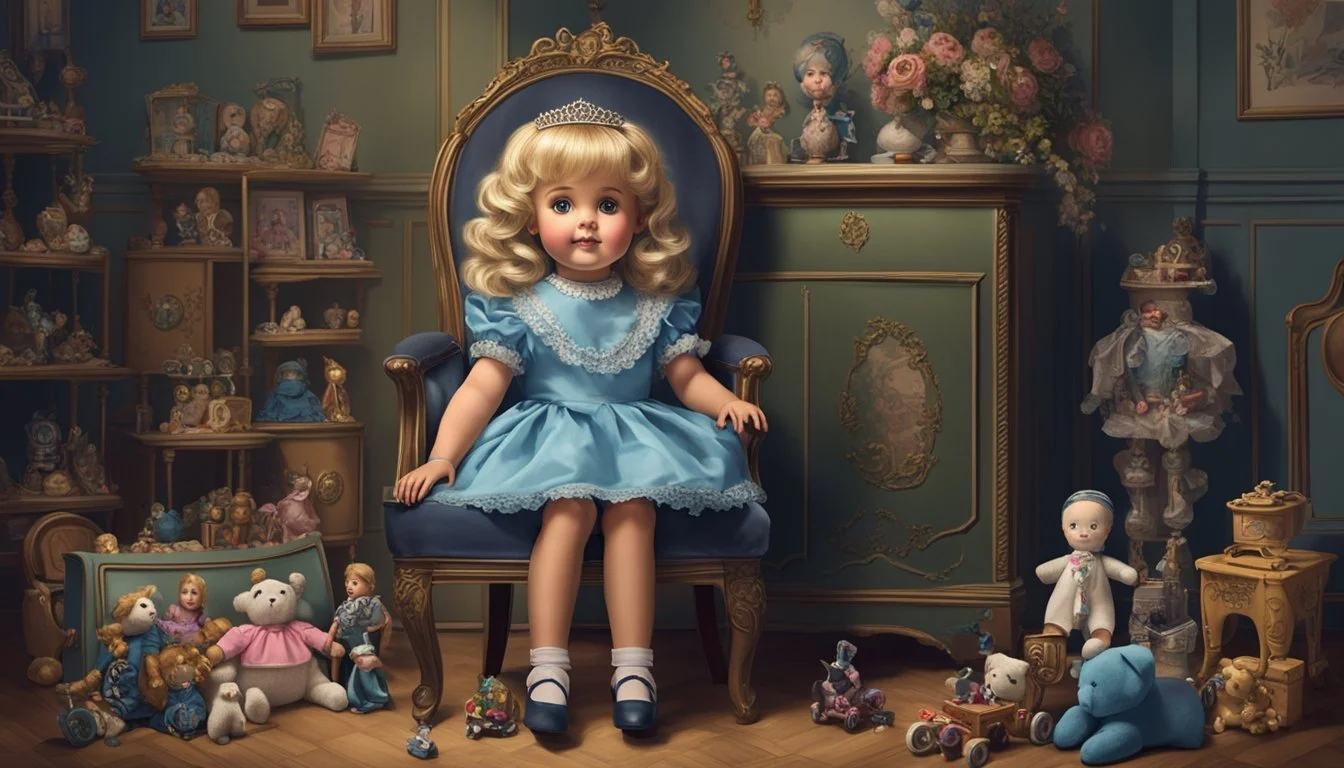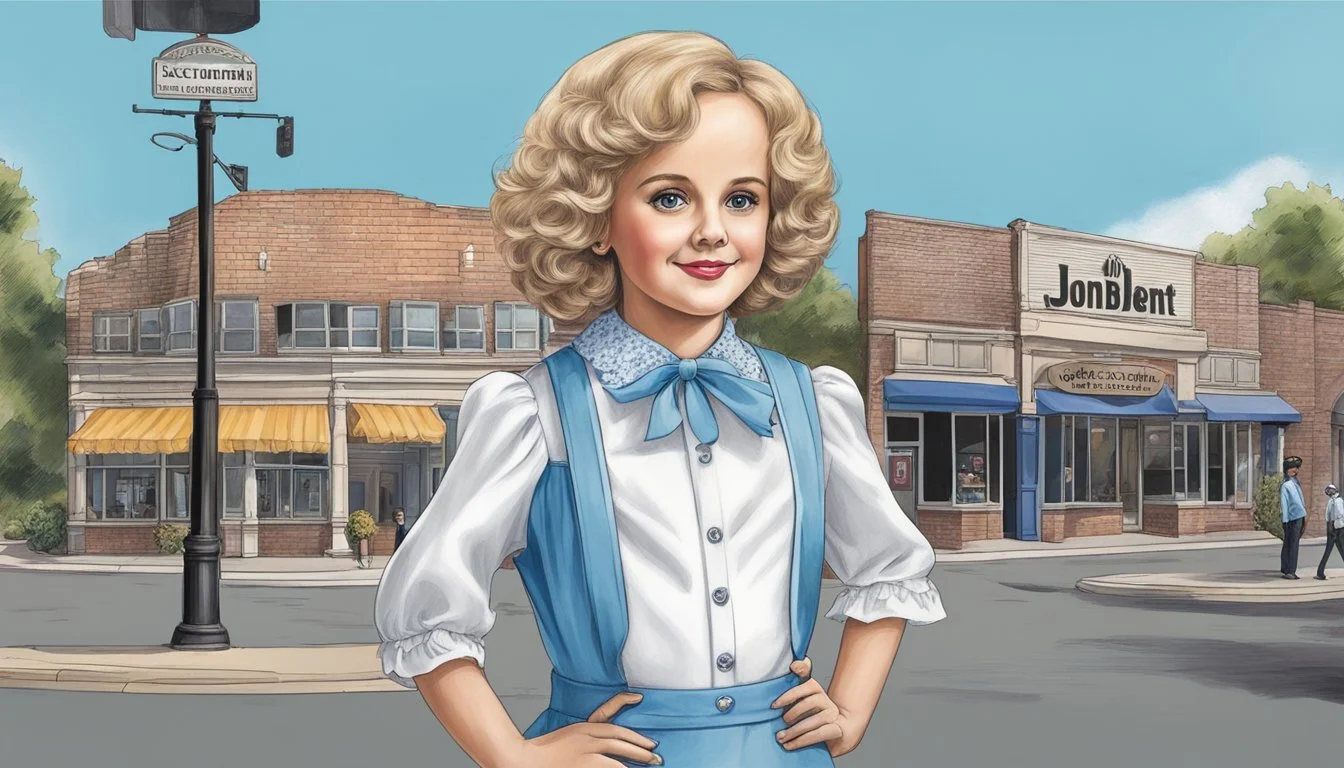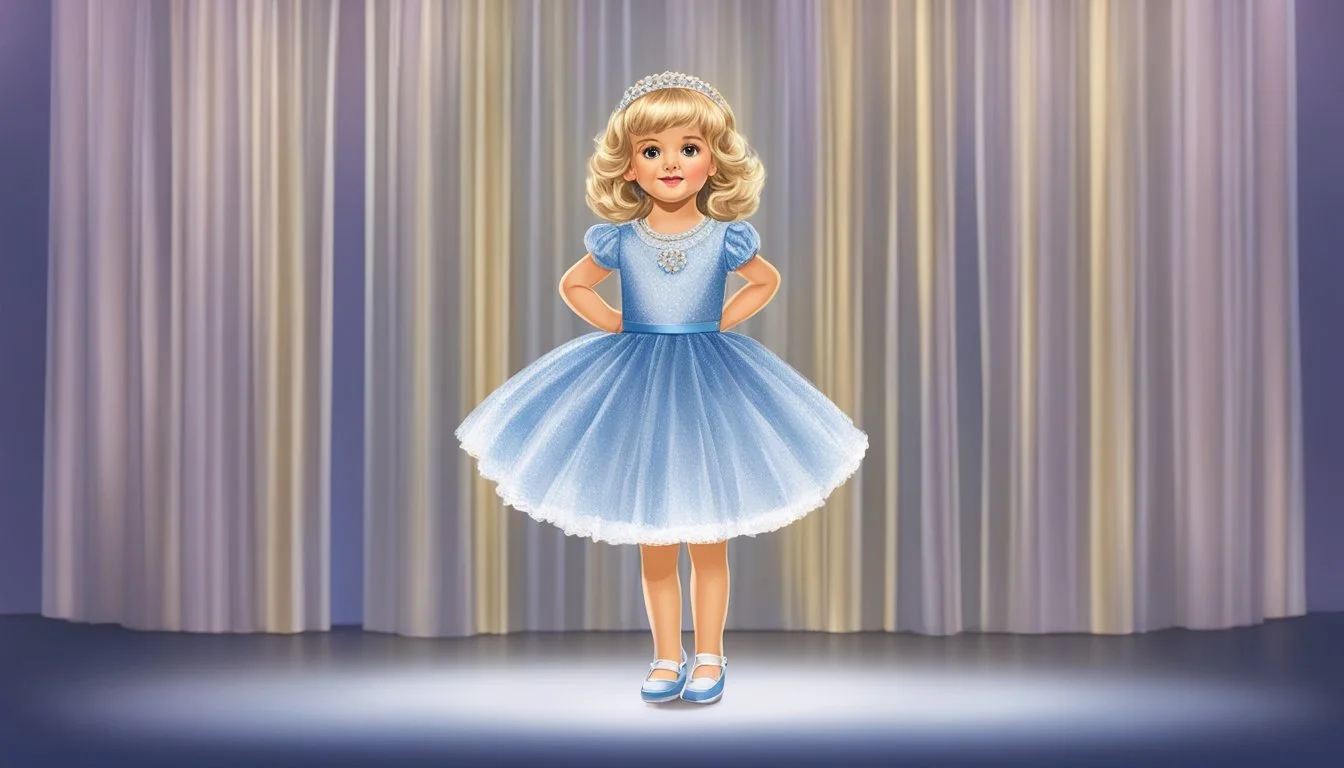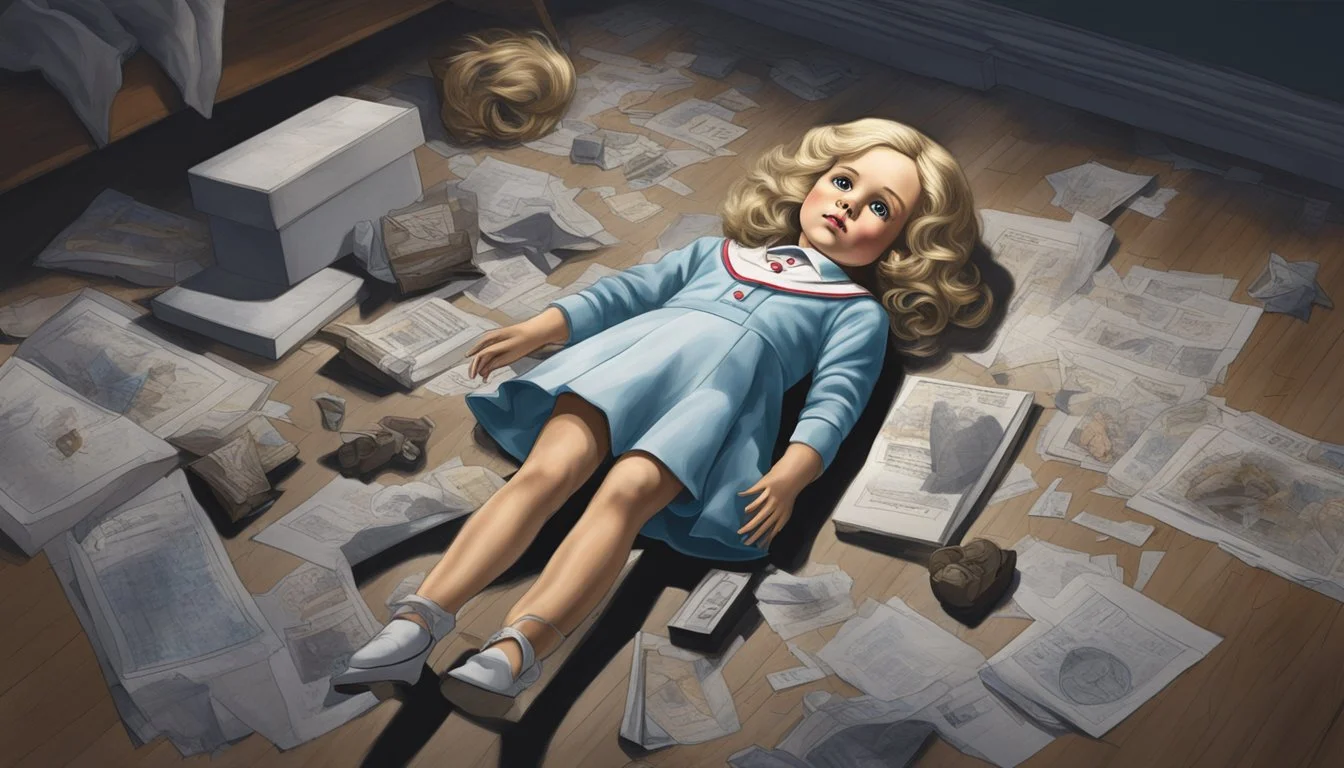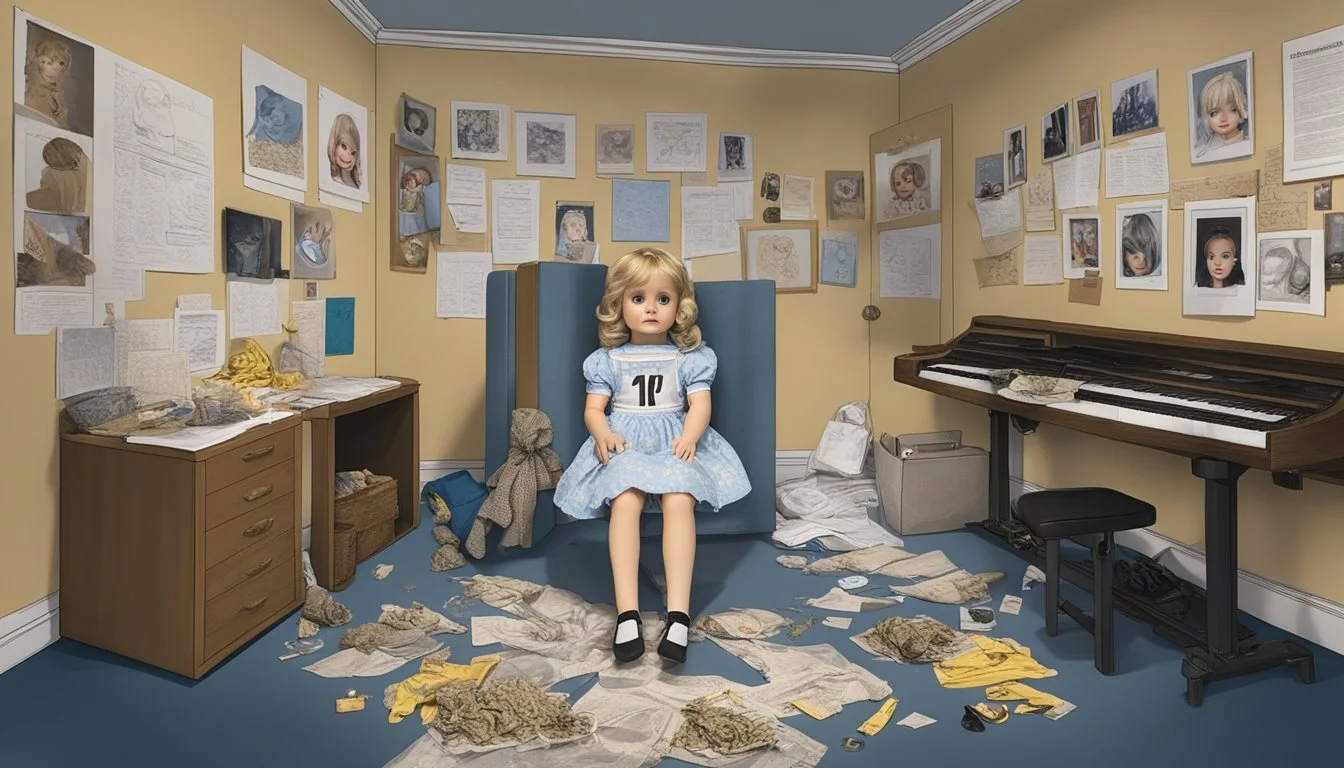The Eerie Mystery of JonBenét Ramsey's Life-Size Doll: A Chilling Clue in Her Unsolved Murder!
The JonBenét Ramsey case continues to captivate public attention decades after the tragic murder of the young beauty queen. One haunting detail that has resurfaced in recent discussions is the life-size doll reportedly given to JonBenét as a Christmas gift shortly before her death. This doll, a custom-made replica of JonBenét herself wearing one of her pageant dresses, became a chilling piece of evidence in the unsolved case.
The existence of this life-size doll has sparked renewed interest and speculation among those following the case. Some sources suggest it was a "My Twinn" doll, a popular customizable doll brand in the 1990s. The doll was reportedly stored in the basement laundry room of the Ramsey home, packed in a white shipping carton.
This eerie detail has not only fueled ongoing discussions about the case but has also inspired works of fiction. Director Osgood Perkins drew inspiration from the JonBenét Ramsey case, particularly the life-size doll element, for his horror movie "Longlegs." The inclusion of such a personal and lifelike item in the investigation continues to add an unsettling dimension to the already mysterious circumstances surrounding JonBenét's murder.
JonBenét Ramsey: A Tragic Figure
JonBenét Ramsey was a 6-year-old beauty queen whose life was cut tragically short. Born on August 6, 1990, she lived in Boulder, Colorado with her family.
JonBenét participated in child beauty pageants, winning titles and capturing public attention with her performances. Her blonde hair and bright smile became iconic images associated with the pageant world.
On December 25, 1996, JonBenét's life took a devastating turn. She was reported missing from her home on Christmas night. The following day, her body was discovered in the basement of the family residence.
The circumstances surrounding JonBenét's death shocked the nation. She had suffered a skull fracture and strangulation. The brutal nature of the crime against such a young victim intensified public interest and media coverage.
JonBenét's murder remains unsolved to this day. The case has been the subject of numerous investigations, documentaries, and books over the past decades.
The tragedy of JonBenét Ramsey serves as a somber reminder of the vulnerability of children. Her story continues to resonate, prompting ongoing discussions about child safety and the impact of early fame.
The Unsolved Mystery of the Ramsey Case
The JonBenét Ramsey murder case remains one of the most perplexing unsolved crimes in American history. Despite extensive investigations and public scrutiny, the truth behind the 6-year-old's death continues to elude authorities and captivate the public.
Investigation and Key Findings
On December 26, 1996, JonBenét Ramsey was found dead in the basement of her family's Boulder, Colorado home. The crime scene revealed several crucial pieces of evidence:
A ransom note demanding $118,000
Signs of strangulation with a garrote
Skull fracture from blunt force trauma
Initial suspicion fell on JonBenét's parents, John and Patsy Ramsey. However, DNA evidence found on the victim's clothing did not match any family members.
The Boulder Police Department faced criticism for their handling of the crime scene. Contamination issues and jurisdictional disputes hampered the investigation's progress.
Theories and Speculation
Numerous theories have emerged over the years regarding JonBenét's killer:
Intruder theory: An unknown assailant entered the house and committed the crime
Family involvement: Suspicions of parents or brother Burke
Pedophile ring: Speculation about connections to child exploitation
FBI agents have provided conflicting opinions on the case. Some believe it was a staged kidnapping gone wrong, while others support the intruder theory.
The mystery surrounding JonBenét's murder has spawned countless books, documentaries, and TV specials. Public interest remains high, with new DNA testing techniques offering hope for a potential breakthrough in solving this decades-old case.
Intersection of True Crime and Entertainment
The JonBenét Ramsey case has profoundly influenced popular culture and sparked public interest in solving cold cases. Its impact extends from inspiring fictional works to fueling amateur sleuthing efforts.
Influence on Popular Culture
The Ramsey case has inspired various forms of media. Films like "Silence of the Lambs" and "Se7en" drew from similar themes of child murders and complex investigations. The life-size doll aspect of the case particularly captivated creators.
Director Osgood Perkins cited the Ramsey case as inspiration for his film "Longlegs". He was intrigued by the detail of JonBenét's life-size replica doll, incorporating this element into his narrative.
Television shows, books, and podcasts have also explored the case. These works often blend fact and fiction, using the case as a springboard for storytelling while maintaining a true crime core.
Efforts to Solve Through Public Interest
The unsolved nature of the Ramsey case has led to widespread public engagement. Online forums and social media platforms host discussions where amateur detectives share theories and analyze evidence.
TV documentaries and specials regularly revisit the case, presenting new perspectives or evidence. These programs often feature interviews with experts and individuals connected to the investigation.
Citizen-led initiatives have emerged, with groups dedicating time and resources to uncovering new leads. Some have even crowdfunded private investigations or DNA testing efforts.
This public involvement has kept the case in the spotlight, pressuring authorities to continue their efforts. It has also raised questions about the ethics of true crime entertainment and its impact on real-world investigations.
Cultural Depictions: Life-Size Replica Doll
The life-size replica doll of JonBenét Ramsey became a haunting symbol, sparking discussions about child pageantry and the commodification of youth. This unusual gift illuminated the complex intersection of childhood innocence and adult expectations in beauty pageant culture.
From Beauty Queen to Doll Imagery
JonBenét's life-size doll, dressed in one of her pageant outfits, represented a disturbing fusion of child and object. The doll mirrored her pageant persona, blurring lines between living performer and inanimate replica. This imagery has been referenced in various media, including films and documentaries exploring the case.
Some artists and filmmakers have used doll imagery to comment on the objectification of children in pageants. The concept has appeared in works examining societal attitudes toward youth and beauty.
Public Reaction and Ethical Concerns
The revelation of JonBenét's life-size doll sparked intense public reaction. Many found the idea unsettling, viewing it as emblematic of the pageant world's impact on childhood. Critics argued it exemplified the premature adultification of young girls in beauty competitions.
Ethical debates arose around children's agency and the psychological effects of such intense focus on appearance. The doll became a focal point for broader discussions about child exploitation and the commercialization of youth.
Media coverage often highlighted the doll, using it to illustrate the case's more sensational aspects. This focus sometimes overshadowed deeper issues surrounding child welfare and safety.
Horror and Crime Narratives
The JonBenét Ramsey case has inspired various artistic interpretations in the horror genre. Real-life crimes often serve as a basis for fictional narratives, blending fact and imagination.
Artistic Interpretations in Horror Genre
Horror films frequently draw inspiration from true crime cases. The movie "Longlegs," directed by Osgood Perkins, incorporates elements reminiscent of the JonBenét Ramsey murder. Perkins uses life-sized dolls as a central motif, creating an eerie atmosphere that echoes the pageant world associated with JonBenét.
The film features an FBI agent named Lee Harker pursuing a serial killer. This narrative structure allows filmmakers to explore the psychological impact of horrific crimes on both investigators and perpetrators.
Real-Life Influences on Horror
True crime often provides a foundation for horror narratives. The JonBenét case, with its unsolved nature and tragic victim, offers rich material for storytellers. Filmmakers and writers blend factual elements with fictional scenarios to create compelling stories.
This approach allows audiences to engage with difficult subjects through a fictional lens. It also raises questions about the ethics of using real tragedies as entertainment. The use of dolls in "Longlegs" serves as a symbolic connection to JonBenét's pageant background, creating a haunting visual metaphor.
Demonic and Occult Themes in Media
Demonic and occult themes have long fascinated audiences across various forms of media. These dark elements often serve as powerful storytelling devices, evoking fear and intrigue.
Satanic Imagery and Its Attraction
Satanic imagery in media captivates viewers through its forbidden and taboo nature. Films, television shows, and music videos frequently incorporate pentagrams, inverted crosses, and demonic symbols. These elements create an atmosphere of danger and rebellion that resonates with certain audiences.
Satan himself often appears as a charismatic antagonist, challenging traditional moral values. Some creators use satanic themes to critique societal norms or explore philosophical questions about good and evil. The allure of the occult in media taps into human curiosity about the unknown and the supernatural.
Portrayal of Evil in Cinema
Cinema has a rich history of depicting evil through demonic and occult themes. Horror films frequently feature malevolent spirits, possessed dolls, and satanic cults as antagonists. These portrayals range from subtle psychological horror to graphic depictions of supernatural violence.
Some movies use occult elements to explore deeper themes of corruption, temptation, and moral decay. Filmmakers often employ visual and auditory techniques to create an unsettling atmosphere, such as distorted imagery and discordant soundtracks.
The use of evil dolls or toys as vessels for demonic entities is a common trope. These objects subvert the innocence typically associated with childhood, creating a powerful contrast that heightens the sense of horror.
Serial Killers and Psychological Horror
Serial killers and their portrayal in media tap into deep-seated fears. Fictional depictions often blend reality with imagination to create compelling psychological horror.
Character Study of Fictional Killers
Fictional serial killers like "Longlegs" captivate audiences through complex backstories and motives. These characters often exhibit disturbing psychological traits that both repel and fascinate viewers. Writers craft intricate killer's plans to heighten suspense and showcase the predator's cunning.
Some fictional killers draw inspiration from real cases. The Longlegs serial killer, for instance, incorporates elements reminiscent of actual crimes. This blending of fact and fiction adds an extra layer of unease for the audience.
Serial Killers and Their Portrayals
Media portrayals of serial killers range from sensationalized to more nuanced character studies. Some depictions focus on the killer's methodology and psychology, while others emphasize the impact on victims and society.
Accurate portrayals often involve extensive research into criminal psychology and investigative techniques. This attention to detail lends authenticity to fictional narratives. Films and TV shows increasingly explore the complexities of serial killer cases, moving beyond simple shock value.
The Longlegs serial killer exemplifies this trend, combining elements of psychological horror with a methodical investigation storyline. Such portrayals aim to unsettle viewers by tapping into primal fears while also providing insight into criminal minds.
Cinematic Techniques in Depicting True Crime
True crime documentaries employ specific visual and storytelling methods to engage viewers and present complex cases. These techniques aim to create compelling narratives while respecting the gravity of real-life crimes.
Storytelling Through Cinematography
Cinematography plays a crucial role in true crime documentaries. Camera angles and movements are carefully chosen to evoke specific emotions. Low-angle shots can make suspects appear more imposing, while handheld camera work may create a sense of unease or urgency.
Lighting is used strategically to set the mood. Dimly lit interview rooms can add an air of mystery, while harsh lighting may emphasize the clinical nature of evidence analysis.
Reenactments often employ stylized visuals, such as slow-motion or blurred edges, to distinguish them from actual footage. This technique helps viewers understand events without confusing reconstructions with reality.
Impact of Visual Storytelling
Visual storytelling in true crime documentaries significantly influences viewer perception and engagement. Graphic design elements, such as timelines and evidence boards, help organize complex information and make it more digestible for audiences.
The use of archival footage and photographs adds authenticity and historical context. These visual elements allow viewers to connect with the time period and setting of the crime.
Editing techniques, like parallel cutting between interviews and crime scene footage, create tension and maintain viewer interest. The pacing of visuals can control the reveal of information, building suspense throughout the documentary.
Color grading is another powerful tool. Muted tones may convey a somber atmosphere, while vivid colors can highlight key evidence or dramatic moments in the narrative.

